Send and bake data to desktop clients
The Desktop clients panel in the model view page lets you browse compatible desktop clients and make one active, which enables a direct connection between the client and the ShapeDiver online platform. Once this connection is active, data and geometry can be sent to and from the client from the platform.
You can read more about desktop clients and how to connect to them in the relative section of the documentation: Desktop Clients
Once you have followed the steps and have authorized a client successfully, you can activate your client and start exchanging data between the client and your online ShapeDiver model.
Create an active connection between the client and one of your models
From the model view page of the model you want your client to interact with, open the “Desktop clients” panel on the right:
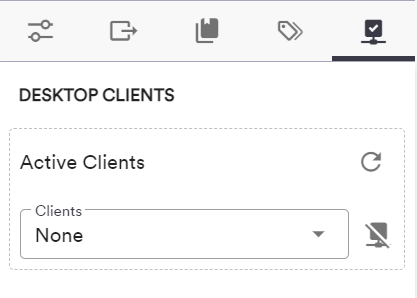
If you have successfully authorized a client, the dropdown element will include it in the list of available clients. If it does not appear, try to use the refresh button (top right) and check again.
Pick your client in the list to enable the connection. When successful, the icon on the right will signal that your client is active and ready for data exchange:
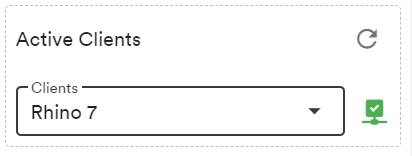
Select input objects in the active client
You can now switch to the “Parameters” panel. This panel contains all the inputs defined in the Grasshopper definition, and of course all of them can be updated as usual when a desktop client is active. However, one type of inputs, which we call structured inputs, are only now available once a client is active. In the model below, the first input called “FloorPolyline” is a structured curve input:
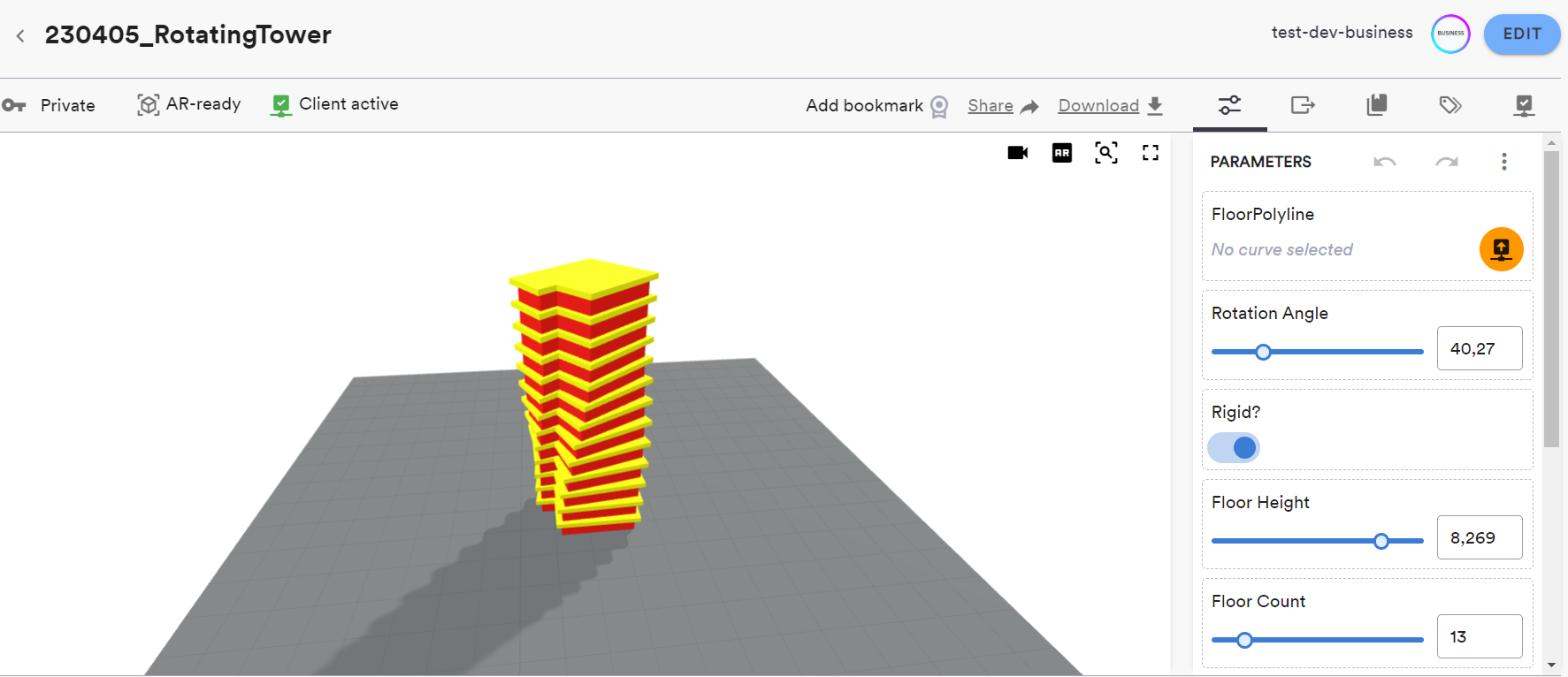
Read this article to learn how you can define structured inputs in your Grasshopper definition.
Clicking on the button will immediately trigger the selection mode in the active client. For example, in the example above, the active Rhino 7 client will prompt the user to select one or several curves in the open document:
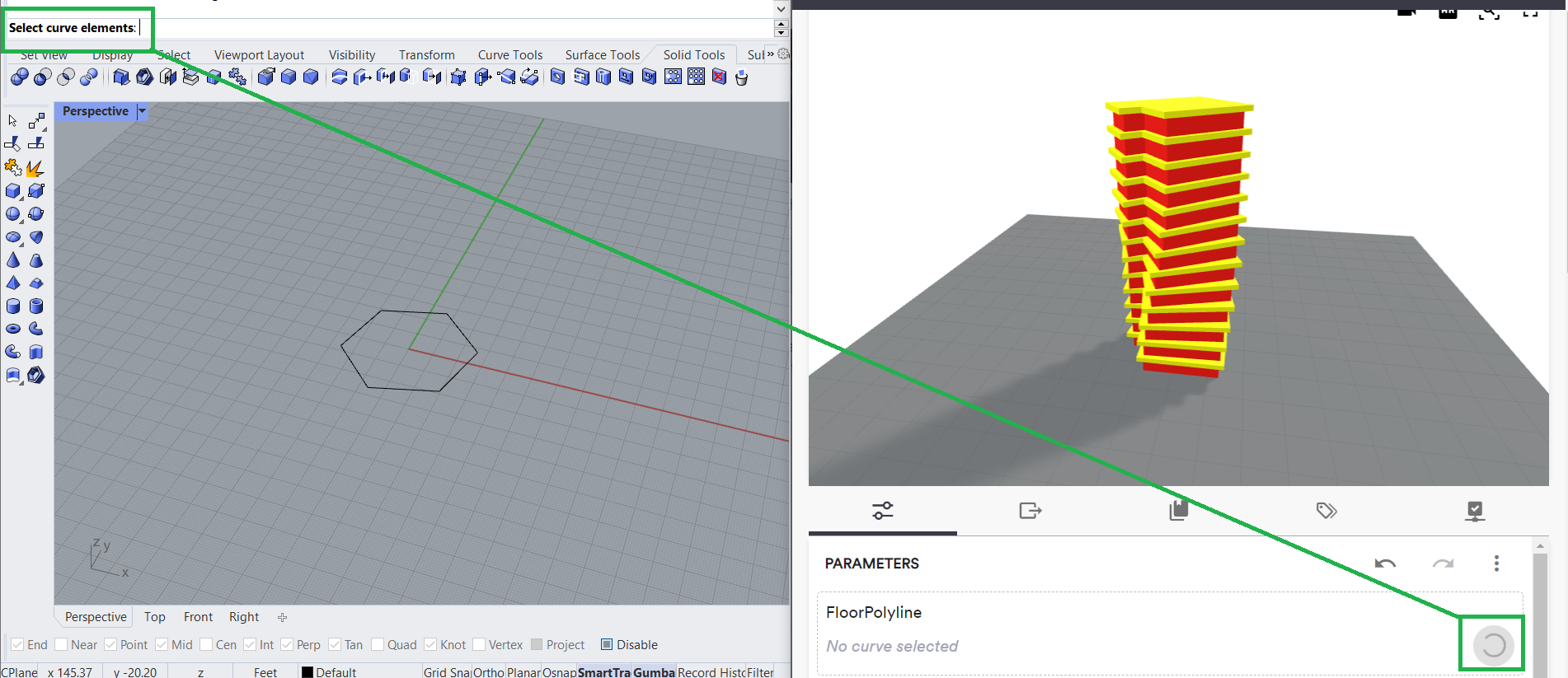
Once curves are selected and the selection is validated, the curves are used as an input of the online model and a computation request is sent to the ShapeDiver servers to recompute the solution, in a similar way that updating a slider triggers a recomputation as well:
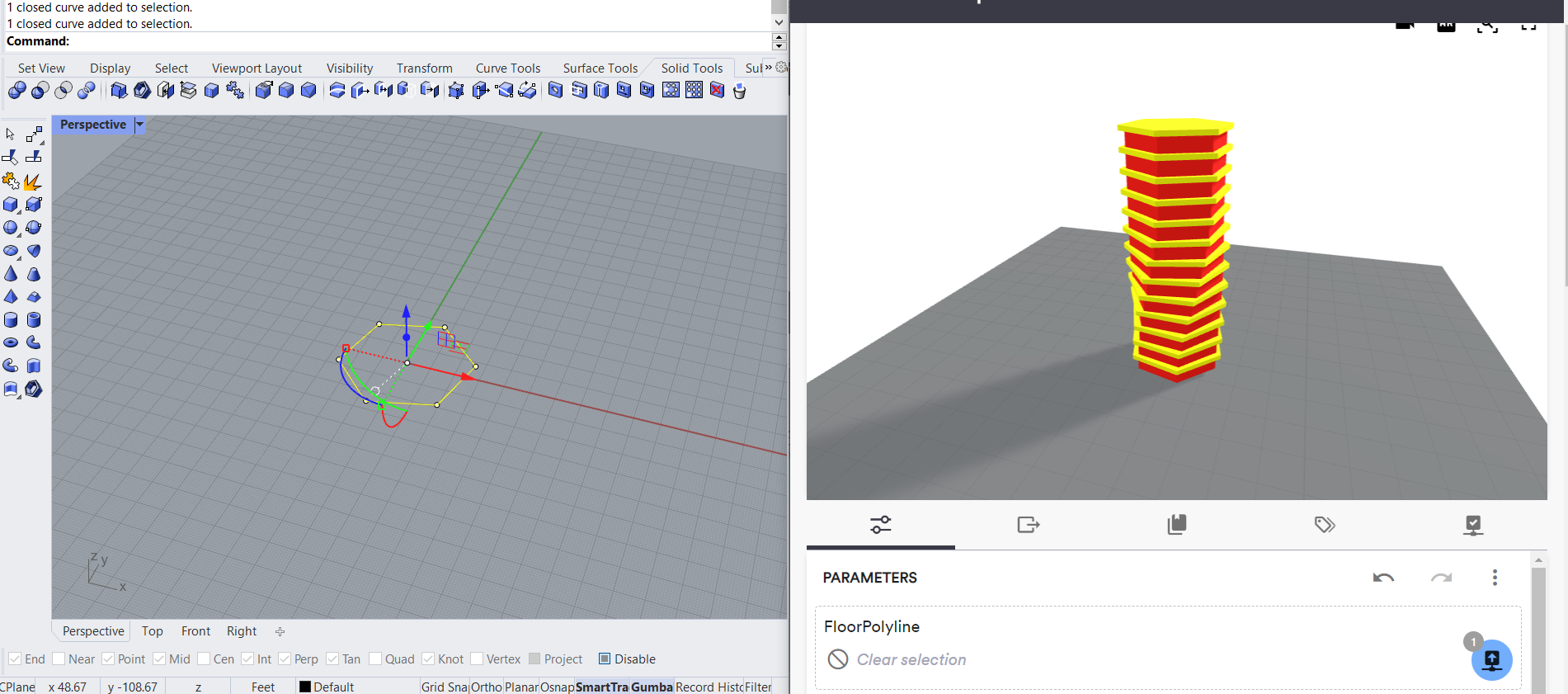
Notice that the UI element corresponding to the input changed from orange to blue, to indicate that some geometry was successfully selected as the input value. The badge indicates the number of objects selected in the client.
On the left, a button to clear the current selection is available when objects are currently selected.
Structured inputs might be disabled even if a desktop client is currently active. The most common reason is that the type of structured input is not supported by the selected client. For example, structured mesh inputs cannot be imported from Adobe Illustrator, since meshes do not exist there.
Bake output objects to the active client
In a symmetrical way that objects can be used as inputs for the online model, structured outputs defined in the Grasshopper definition are turned into UI elements that allow baking those outputs into the active client.
Read this article to learn how you can define structured outputs in your Grasshopper definition.
Structured outputs are displayed in the “Exports and Outputs” panel, which is also used for traditional file exports. Each of them is displayed in an accordion menu corresponding to a ShapeDiver Output component. In our example, there is one Output component which contains two structured outputs:
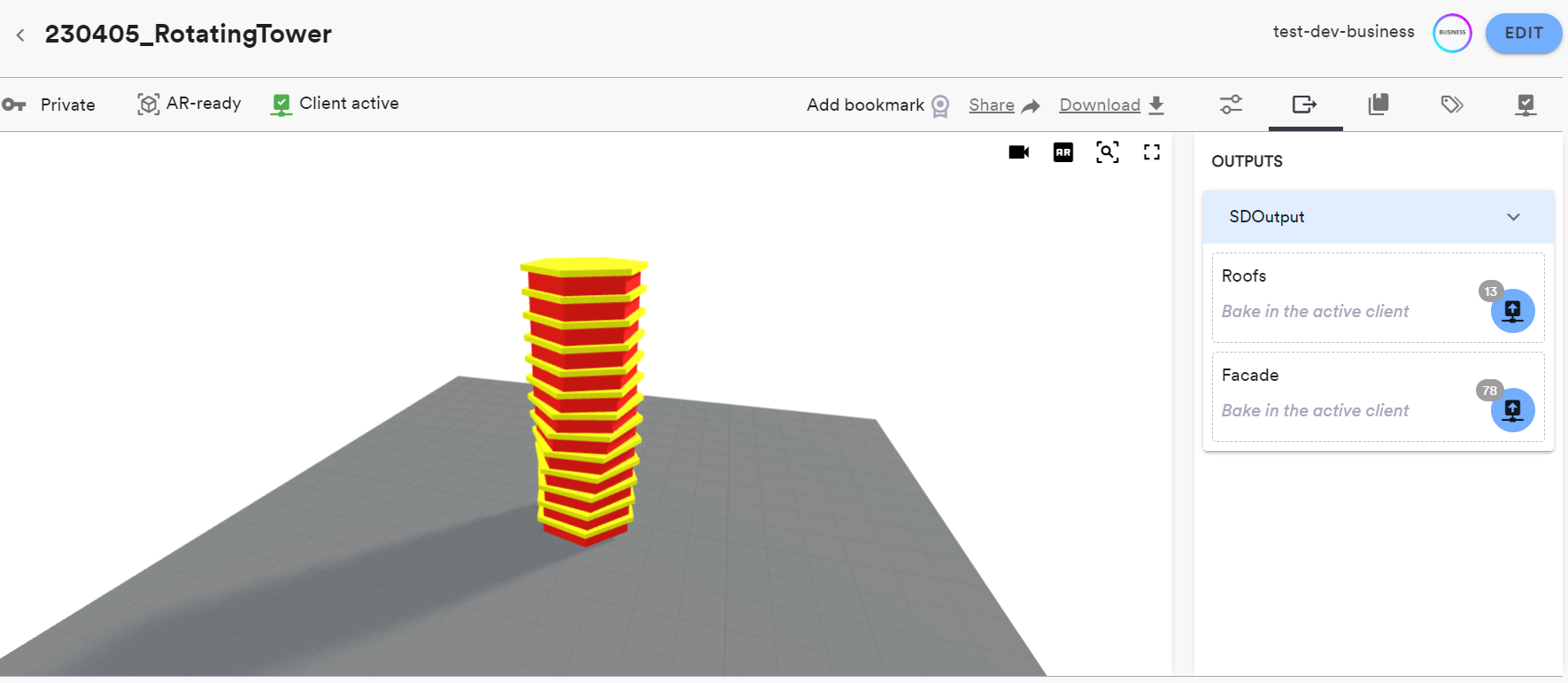
Like for inputs, the number of elements corresponding to the current solution is displayed for each output. When a client is active, clicking on the button will directly bake the objects in the open document:
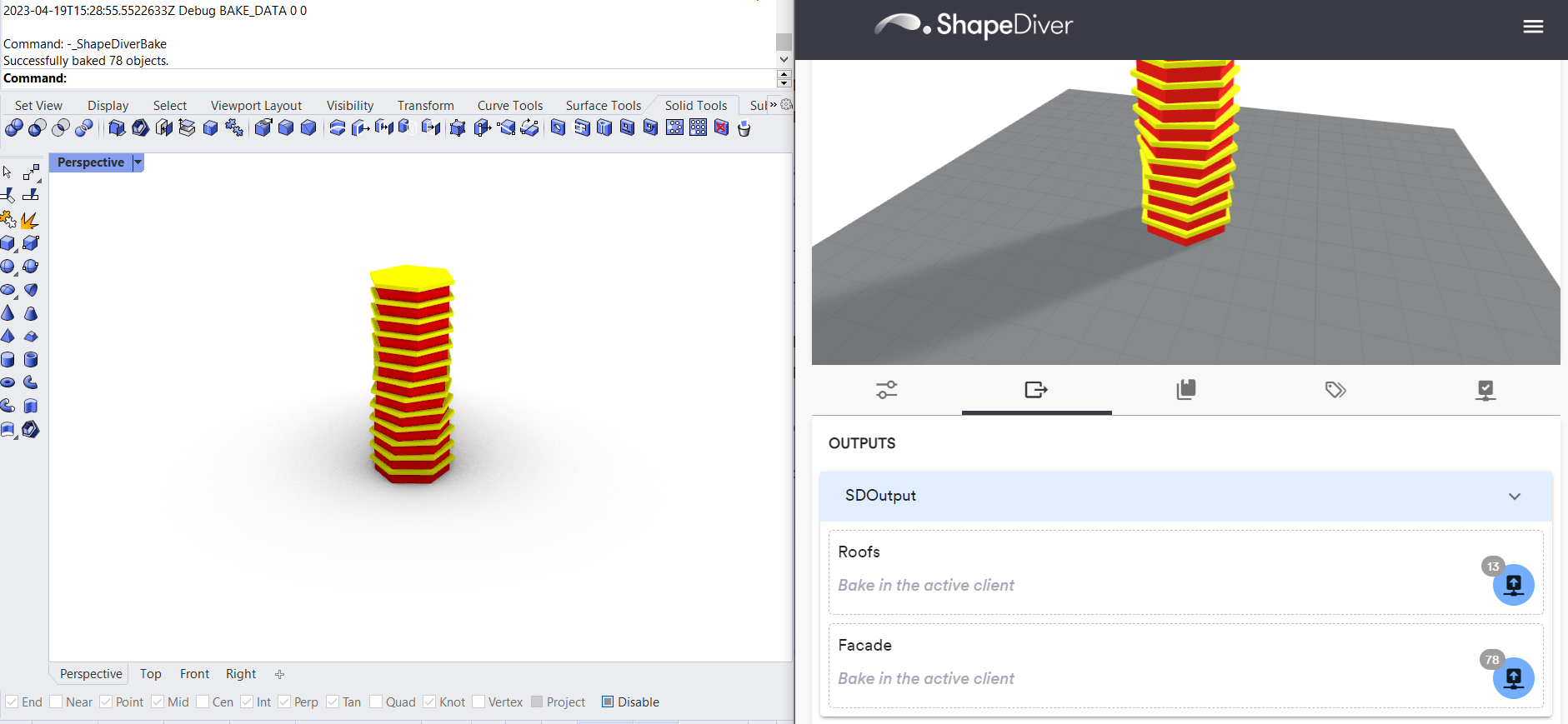
Structured outputs might be disabled even if a desktop client is currently active, if their type is not compatible with the currently active client. As an example, meshes cannot be baked to Adobe Illustrator.
